12 Places Where You Can Ethically See Elephants In The Wild

Watching elephants roam freely in their natural habitats is a magical experience that can touch your heart forever.
These intelligent giants deserve our respect and protection, not captivity or exploitation for entertainment. Fortunately, there are wonderful places around the world where you can observe elephants living their best lives while supporting conservation efforts.
1. Chobe National Park, Botswana
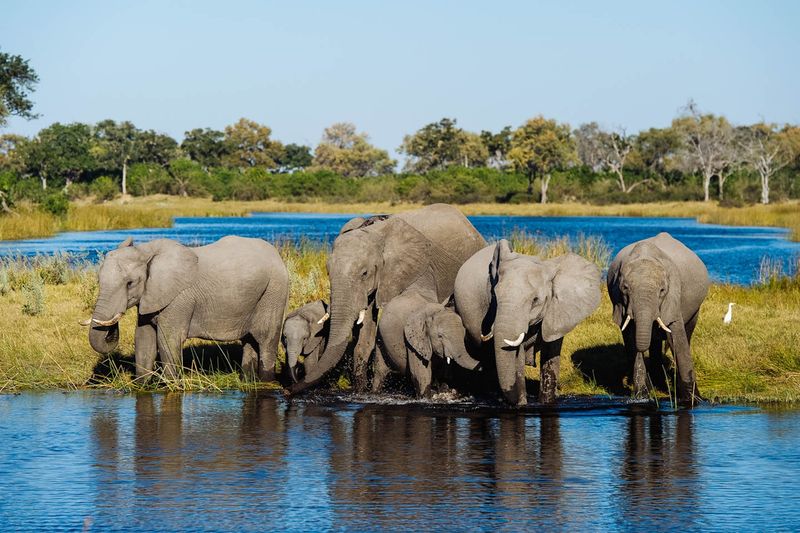
Home to Africa’s largest elephant population, Chobe offers unforgettable boat safaris along the Chobe River. Watching entire herds gather at sunset to drink and bathe is simply breathtaking.
The park’s strict protection policies have allowed elephant numbers to flourish here, creating one of the continent’s greatest conservation success stories. Rangers work tirelessly to combat poaching and preserve this elephant paradise.
2. Amboseli National Park, Kenya
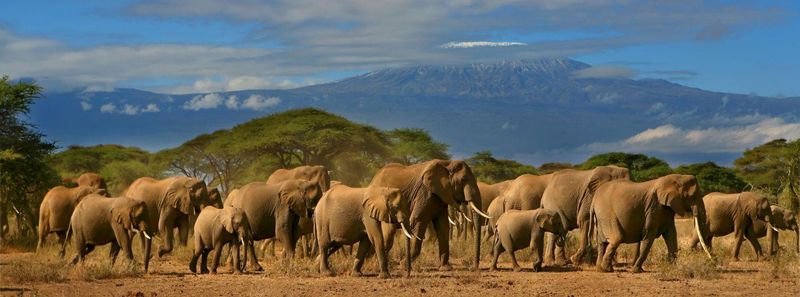
Against the backdrop of snow-capped Mount Kilimanjaro, Amboseli’s elephants create Africa’s most iconic wildlife scenes. The park’s relatively flat, open landscape makes spotting the majestic herds incredibly easy.
Researchers have studied these elephant families for decades, documenting their complex social behaviors and intelligence. Many guides know individual elephants by name and can share fascinating stories about their personalities.
3. Minneriya National Park, Sri Lanka

Every dry season, hundreds of Asian elephants gather around Minneriya Lake in what locals call “The Gathering” – one of Asia’s greatest wildlife spectacles. Families socialize, youngsters play, and adults feast on fresh grass exposed by receding waters.
Unlike many wildlife experiences, viewing happens at a respectful distance that doesn’t disturb natural behaviors. Safari jeeps maintain ethical viewing practices while still offering amazing photography opportunities.
4. Addo Elephant National Park, South Africa

From just 11 elephants in 1931, Addo now protects over 600 gentle giants. The park’s unique viewing hides let you watch elephants splash at waterholes from just yards away while remaining completely undetected.
These elephants are famous for their nearly tuskless adaptation – an evolutionary response to decades of ivory hunting. Many females now birth tuskless calves, a fascinating but sad reminder of human impact on wildlife.
5. Khao Yai National Park, Thailand
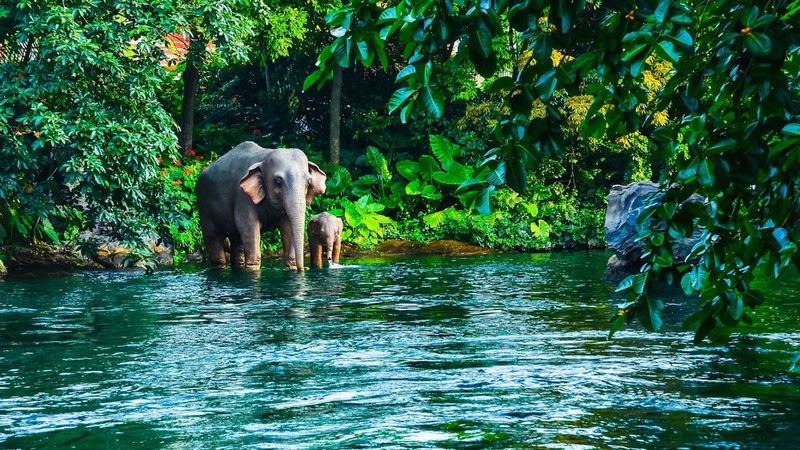
Wild Asian elephants roam freely through Thailand’s oldest national park, a UNESCO World Heritage site just three hours from Bangkok. Hiking with experienced guides often leads to magical elephant encounters amid lush rainforest.
Rangers monitor these elephants using camera traps and tracking programs that help protect them from human-wildlife conflict. The park represents Thailand’s commitment to preserving its remaining wild elephant population after decades of decline.
6. Udawalawe National Park, Sri Lanka
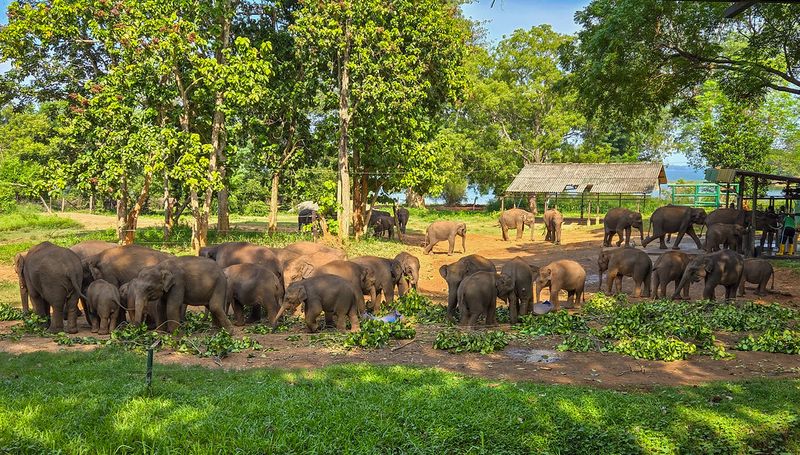
Created specifically as an elephant sanctuary, Udawalawe almost guarantees elephant sightings year-round. The park’s open grasslands and scattered water holes provide perfect viewing conditions even for photography beginners.
Adjacent to the park sits the famous Elephant Transit Home where orphaned babies are rehabilitated and released back into the wild. Visitors can watch feeding times from a distance without any direct contact – true conservation in action.
7. Hwange National Park, Zimbabwe
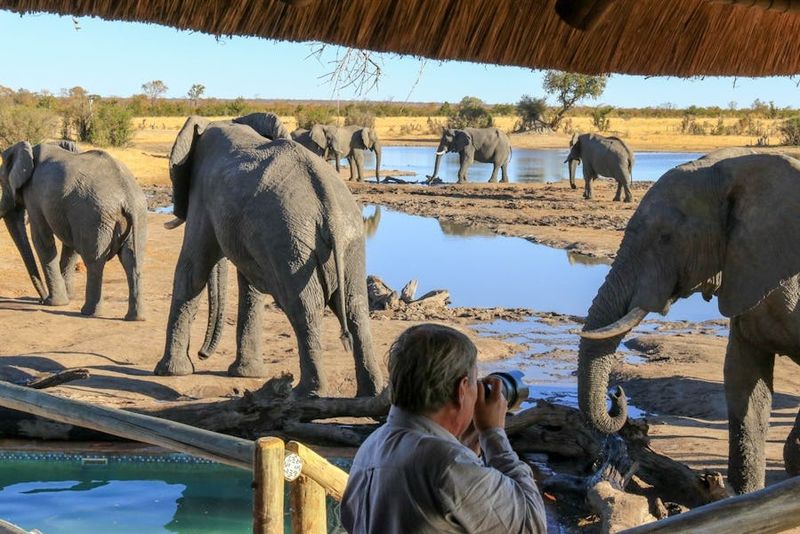
Zimbabwe’s largest reserve features over 100 artificial waterholes that sustain massive elephant herds during dry seasons. Some camps overlook these gathering spots, letting you watch elephants from your private veranda.
Conservation groups monitor these herds closely, using satellite tracking to understand migration patterns and protect crucial corridors. The park represents a vital refuge where elephants can follow ancient pathways despite increasing human development surrounding the reserve.
8. Tarangire National Park, Tanzania
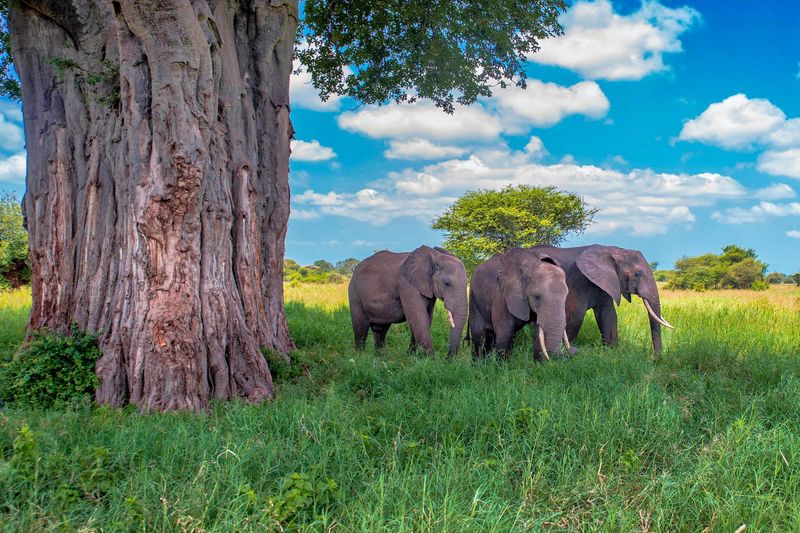
During the dry season, Tarangire becomes home to one of Africa’s highest elephant concentrations. Massive herds gather along the Tarangire River beneath giant baobab trees that define this stunning landscape.
Scientists have documented remarkable elephant behaviors here, including their ability to communicate over long distances using infrasound. Families maintain complex social bonds, with matriarchs leading their clans to hidden water sources using knowledge passed down through generations.
9. Periyar Tiger Reserve, India
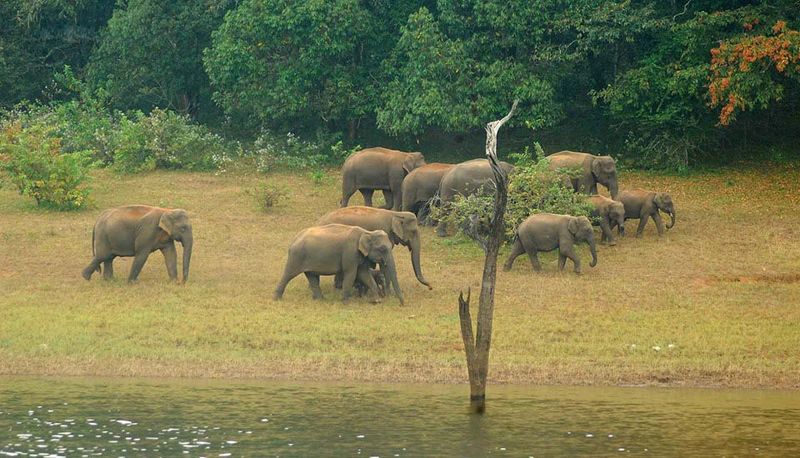
Boat safaris on Periyar Lake offer unique perspectives of wild Asian elephants coming to drink and bathe. Morning mist creates magical scenes as elephant families emerge from the forest edge into golden sunlight.
The reserve employs former poachers as forest guards, transforming potential threats into powerful protectors. This innovative approach has dramatically reduced poaching while providing sustainable livelihoods for local communities who now see elephants as valuable living treasures.
10. Kruger National Park, South Africa
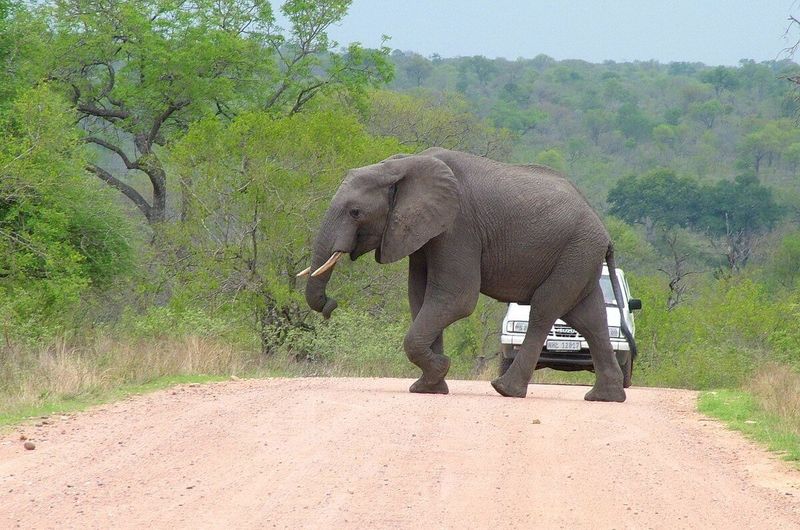
South Africa’s flagship reserve offers self-drive safari opportunities where you might encounter elephant herds crossing the road right in front of your vehicle. The park’s extensive network of viewing hides and waterholes maximizes ethical viewing chances.
Kruger’s elephants have fascinating adaptations to their savanna environment. Some family groups have learned to operate water pumps with their trunks during droughts – remarkable evidence of their problem-solving intelligence and cultural learning abilities.
11. Way Kambas National Park, Indonesia

Sumatra’s critically endangered elephants find sanctuary in this lowland rainforest reserve. Guided walking tours along elephant pathways offer intimate glimpses into the secret lives of these rare giants.
The park houses a successful elephant conservation center where rangers patrol on trained elephants to protect wild herds from poachers. These magnificent Sumatran elephants are smaller than their mainland cousins but possess the same intelligence and complex social structures.
12. Okavango Delta, Botswana

Africa’s last great wetland wilderness provides a paradise for elephants who swim between islands using their trunks as snorkels. Mokoro canoe safaris offer silent, non-intrusive observation opportunities unlike anywhere else on Earth.
The Delta’s constantly changing landscape creates a dynamic ecosystem where elephants have adapted unique behaviors. They’ve developed specialized feeding techniques to extract water lilies and have mapped mental routes through shifting waterways – showcasing their remarkable environmental intelligence.






